LIBRARY
Special feature GINZA KABUKIZA

Architectural Design
Old materials give the building color
and an aura of history
Design Department IV, Satoru Sumitani
Architectural Supervision
Design supervision of
a high-performance office tower
to harmonize with the Kabukiza
Design Department IV, Takushu Arai
The unprecedented challenge of combining a high-rise office building with the much beloved Kabukiza Theatre without impairing its image, fell to the architectural design team. What was important to them in faithfully recreating the look and feel of the previous Kabukiza?
Old materials give the building color and an aura of history
Architectural design, Design Department IV, Satoru Sumitani
This project presented an unprecedented challenge: to rebuild a traditional theatre dedicated to Kabuki, while inheriting its previous architectural design, and integrating a high-rise office building at the same time. As I was responsible for the architectural design of the theatre, I conducted research with the historical materials of the previous theatre, and took measurements on site.
I started by studying the shapes and dimensions of the building’s distinctive architectural features, such as the roof tiles, the “kumimono” bracketing at the top of the pillars that support the eaves, and the “tategu” fittings. On that basis, we tried as far as possible to re-use old materials. For example, the transom with an open-work pattern of flowers placed over the main entrance of the 4th Kabukiza was re-installed to the new main entrance. This design goes back to the 3rd Kabukiza. We also saved and re-used many of the metal ornaments used on the cusped gable and the interior, as well as stone and wood materials. As for the stone framework of the entrance doors and the wooden proscenium arch of the stage, we used the old materials with only minimal refurbishing, retaining the scratches and nail marks left by time. Old materials that have been used for a long time give off an aura. By incorporating old materials in a design that faithfully inherits the design of the 4th Kabukiza, the inherited parts come to life and give a sense of the passage of time. I think old materials convey the aura of history and lend elegance and color to the 5th Kabukiza.

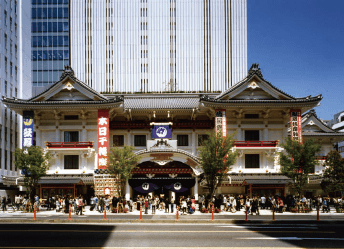
Above: 4th Kabukiza (photo courtesy of Shochiku Co., Ltd. and Kabuki-za Co., Ltd.).
Below: 5th Kabukiza
At the project site, I was in charge of the exterior. I worked closely with the Kengo Kuma office, the contractor, and the lighting designer to check the fit of the various exterior materials and how the re-used materials were working. We used actual-size drawings to check the re-used metal fixtures around the roof. Finally, we built a mockup to check the fit of the materials, the color, the construction methods, and how it would all look when lit up at night. The exterior team worked hard to ensure that the wide range of materials used, including prestressed concrete plates, glass fiber reinforced concrete, aluminum, tiles, and metal ornaments, were all installed harmoniously, carefully checking the texture and grain of the materials and their alignment. It was one difficult task after another, but there were also many exciting moments such as when the scaffolding came down and part of the exterior of the 5th Kabukiza came into view on Harumi-dori.
The moment when life is infused into the sleeping theatre
What I enjoyed the most by participating in this project was the grand opening, seeing so many fans throng to the newly completed 5th Kabukiza. Up to that time, the theatre seemed to be sleeping. But then it awoke and started to breathe, as if given a new life. It’s true – buildings come to life when they are used. Personally I was happy to hear what my grandmother had to say. She had known the Kabukiza since the 3rd-generation building, and her opinion was that this one was the best, with its white walls. The color of the 4th Kabukiza was warmer, but that was due to grime, exhaust gases, and ultraviolet rays. A new building could not be built with that color. From an analysis of the previous building, we concluded that it too was probably the color of white plaster at the start, so when we chose the color of the paint we knew exactly what we wanted. It was gratifying to hear that effort appreciated.

Design supervision of a high-performance office tower to harmonize with the Kabukiza
Architectural supervision, Design Department IV, Takushu Arai
I joined the project as an architectural supervisor, after construction had already started. My assignment was the interior and facade of the high-rise tower and the underground connection. There was an enormous volume of items to check – whether the construction documents were faithful to the design documents, whether everything fits together, down to the smallest detail. When selecting materials and shades of color, we consulted the Kengo Kuma office.
The mission of an architectural supervisor is to see that the construction work is completed on schedule, while also considering cost and the safety of the building. Mitsubishi Jisho Design has many years of experience in this field, and has a policy of strict supervision. But communication with the builders is important, so our basic stance was “Let’s make something great together.”
The advantage of having expert professionals in every field
The performance of the various parts of the building was tested for every scenario, including torrential rains, extraordinarily strong winds, and earthquakes. If an issue arose, the architectural designers would meet with the MEP and structural engineers and share ideas. It brought home the advantage of a full-service architectural firm that has expert professionals in every department.
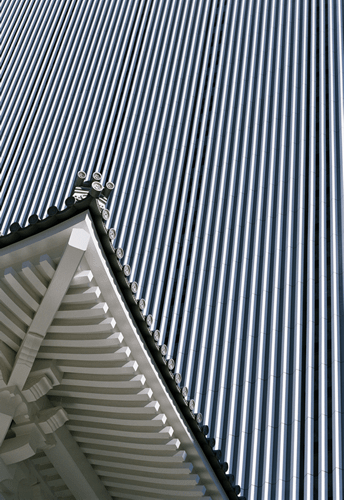
Facade of the tower behind the Kabukiza
At the construction site, we worried about the color of the tower’s facade. White is an especially difficult color. The building itself is very large, and it would form the backdrop for the theatre, so the color could not be too prominent. It makes a different impression on sunny and cloudy days, and we had to consider the question of compatibility with the shade of the theatre. We made many mockups to study it.
As the background to the Kabukiza Theatre, the architectural design of the exterior has a role like a supporting actor. It does not aim to be more. But I think we were also successful in providing high performance and high added value in the spaces occupied by the office tenants.

※This special feature was published in 2013.
The job titles given for the persons interviewed are the titles that they held at that time.
-

Project Manager
While inheriting tradition, marshalling all of Mitsubishi Jisho Design’s technology and experience
Read more →
-
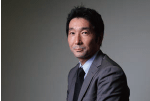
Design Chief
Inheriting the hidden qualities of the previous Kabukiza
Read more →
-
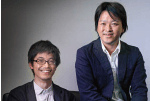
Architectural Design
The challenge of combining a high-rise office building with the much beloved Kabukiza Theatre
Read more →
-

Structural Design / Supervision
The challenge of constructing a high-rise tower over a column-free space
Read more →
-
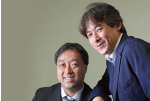
MEP Design
Fidelity to the original building design, updated with the latest functions
Read more →
-
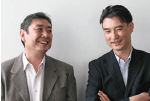
Urban Planning / Landscape
The new Kabukiza as an integrated culture center
Read more →
